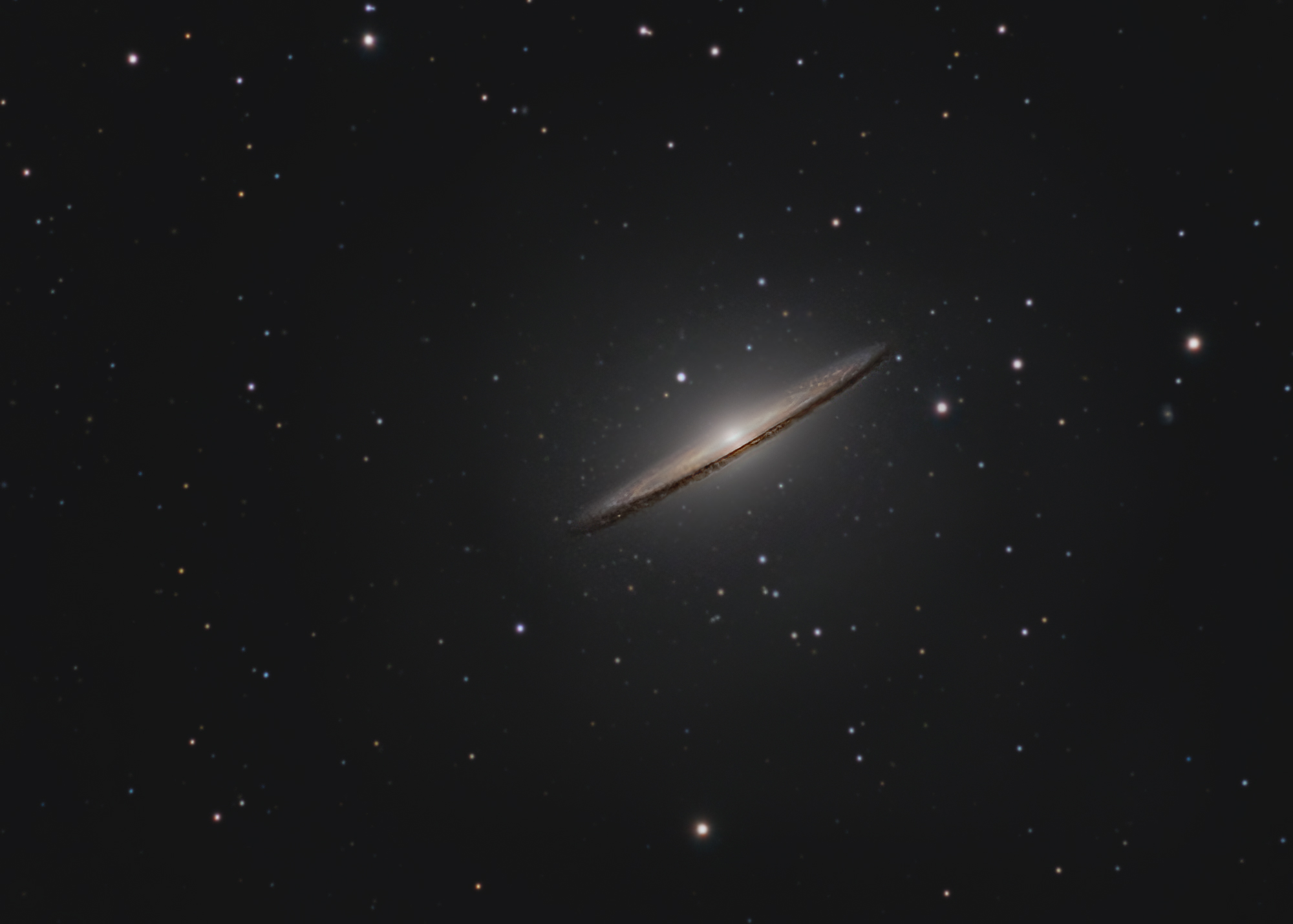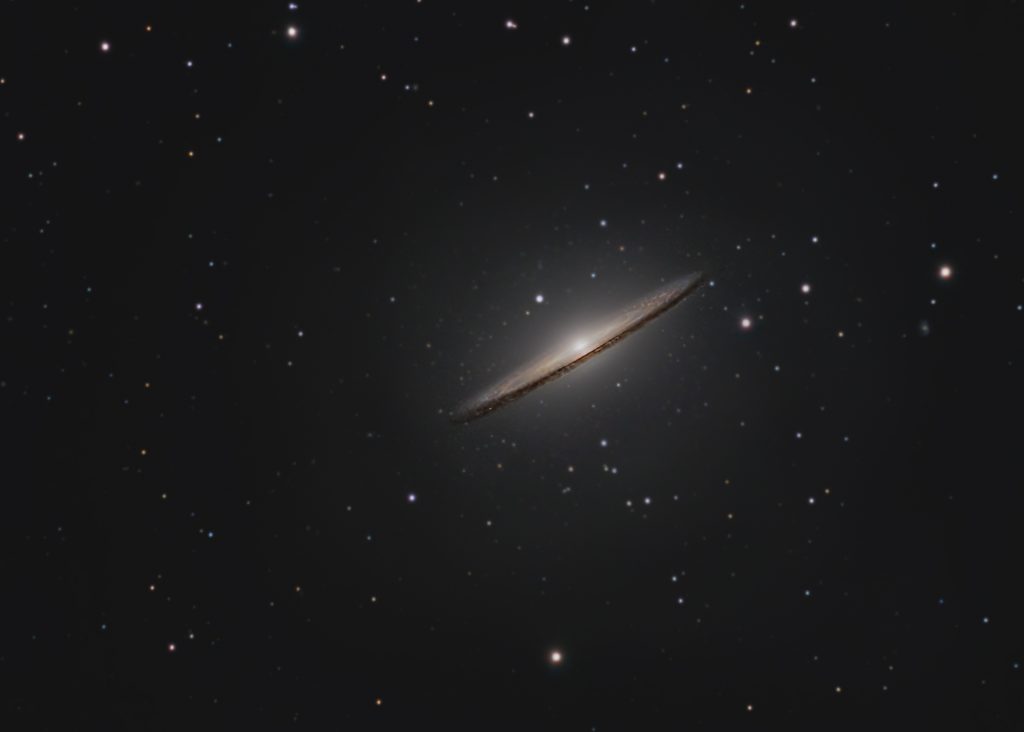Optik / Mount: 12″ACF f7, Alt-5 TeenAstro
Camera / Filter: ZWO ASI 6200 MM Pro Mono
Astrodon LRGB true colors 7.5h
Date 25.03.2022
The Sombrero Galaxy (also known as Messier Object 104, NGC 4594) is a spiral galaxy in the constellation borders of Virgo and Corvus, being about 9.55 megaparsecs (31.1 million light-years) from our galaxy, within the local supercluster. It has a diameter of approximately 15 kiloparsecs (49,000 light-years), three-tenths the size of the Milky Way. It has a bright nucleus, an unusually large central bulge, and a prominent dust lane in its outer disk, which is viewed almost edge-on. The dark dust lane and the bulge give it the appearance of a sombrero hat. Astronomers initially thought the halo was small and light, indicative of a spiral galaxy; but the Spitzer Space Telescope found that the dust ring was larger and more massive than previously thought, indicative of a giant elliptical galaxy. The galaxy has an apparent magnitude of +8.0, making it easily visible with amateur telescopes, and is considered by some authors to be the galaxy with the highest absolute magnitude within a radius of 10 megaparsecs of the Milky Way. Its large bulge, central supermassive black hole, and dust lane all attract the attention of professional astronomers. @wiki
La galaxie Sombrero (également connue sous le nom d’objet Messier 104, NGC 4594) est une galaxie spirale située aux confins des constellations de la Vierge et de Corvus, à environ 9,55 mégaparsecs (31,1 millions d’années-lumière) de notre galaxie, au sein du superamas local. Son diamètre est d’environ 15 kiloparsecs (49 000 années-lumière), soit trois dixièmes de la taille de la Voie lactée. Elle possède un noyau brillant, un bulbe central inhabituellement grand, et une bande de poussière proéminente dans son disque externe, qui est vu presque de côté. Le couloir de poussière sombre et le bulbe lui donnent l’apparence d’un chapeau sombrero. Les astronomes pensaient initialement que le halo était petit et léger, indiquant une galaxie spirale ; mais le télescope spatial Spitzer a découvert que l’anneau de poussière était plus grand et plus massif qu’on ne le pensait, indiquant une galaxie elliptique géante. La galaxie a une magnitude apparente de +8,0, ce qui la rend facilement visible avec les télescopes amateurs, et est considérée par certains auteurs comme la galaxie ayant la magnitude absolue la plus élevée dans un rayon de 10 mégaparsecs de la Voie lactée. Son grand bulbe, son trou noir supermassif central et son couloir de poussière attirent tous l’attention des astronomes professionnels.

